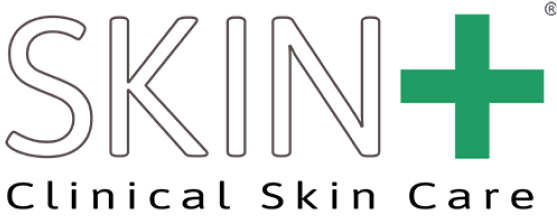Okay, so there was this Valisure study that made headlines: “Benzene, a known human carcinogen, showing up in benzoyl peroxide (BPO) acne treatments”—not just trace contamination in hand sanitizers or dry shampoos, but forming from the BPO itself under heat. Cue panic. These results had everyone googling “high levels of benzene” with tight-lipped concern. But is this a real threat to your skin (or lungs)?
What Valisure Actually Found
Valisure—an independent testing laboratory—bought over-the-counter and prescription benzoyl peroxide acne products (think Clearasil, Proactiv, PanOxyl, Clinique) and incubated them at 37 °C, 50 °C, and 70 °C (98.6 °F, 122 °F, 158 °F). They found benzene levels hundreds of times above the conditional FDA limit (2 ppm), which is the conditionally restricted FDA concentration limit for drug products.
They even measured benzene in the air around product packages—suggesting potential inhalation risk in scenarios like hot-car storage or poorly ventilated stockrooms. Some of these scenarios were described as foreseeable conditions, like sitting in a warehouse in summer heat. They filed a citizen petition with the U.S. Food and Drug Administration (FDA), urging urgent action: recalls, investigations, and regulatory reviews of acne products. (Valisure’s testing)
This was framed as an environmental and consumer safety emergency. Valisure’s co-founder and president of Valisure, David Light, called for a total review of benzoyl peroxide-containing products and even warned of long-term inhalation exposure, which could potentially lead to blood disorders according to the International Agency for Research on Cancer and the Environmental Protection Agency.
What’s more, Valisure says this isn’t just contamination (like in hand sanitizers or dry shampoos from recent years). Instead, it’s the formation of benzene from the breakdown of BPO itself, hinting at a fundamental instability in the chemical under stress. This means benzene exposure may arise not from poor manufacturing but from heat and time—factors like storage conditions and temperature of a hot car.
Bad Science or Fear-Mongering?
Michelle Wong (aka Labmuffin Beauty Science), a cosmetic chemist, put out an epic deep-dive dismantling the hype. Her “Benzene in your products, Part 1: Bad science” blog—and follow-ups—are worth bookmarking. She argues it’s basically fear-mongering rooted in science taken out of context. Her point-by-point:
-
Unrealistic scenarios: Temperatures like 70 °C (158 °F) aren’t what your bathroom or closet sees. These are “stress tests” used in pharmaceutical stability testing temperature models, not real life.
-
Frame spin: Valisure led with the scariest headlines—“unacceptably high levels”—rather than clearly stating that under real-world conditions, benzene was undetectable or insignificant in most consumer products.
-
Misleading metrics: They highlight ppm concentration without revealing actual dosage. People encounter benzene daily from a variety of sources, like cigarette smoke, car exhaust, and even volcanoes.
-
Cherry cherry: Not all BPO formulations reacted the same. Some counter benzoyl peroxide products and popular brands showed low or undetectable benzene levels, especially when formulated well.
-
Risk overblown: There’s no clinical or observational evidence linking long-term use of BPO medications to benzene exposure that would result in health issues like cancer or blood disorders.
Check out her blog: Labmuffin’s post on benzene and bad science
FDA Responds, and What Regulators Think
Fast forward: the U.S. Food and Drug Administration (yep, that drug administration authority) tested 95 BPO drug products after Valisure’s tests. They found undetectable or extremely low benzene levels in over 90% of on-market BPO products. Only six items exceeded the safe level of benzene, which led to voluntary product sale suspensions and recalls from brands like Johnson & Johnson and Estée Lauder’s Clinique line.
Here’s how it played out:
-
March 2024 – Valisure submits the citizen petition based on its independent laboratory tests.
-
FDA spokesperson announces ongoing review and initial testing.
-
Independent lab today reports show six outliers, prompting recalls.
-
CBS News and other media outlets report consumer safety alerts.
-
Market withdrawal of BPO-containing products (mostly acne spot treatments) happens gradually.
Interestingly, Valisure’s previous findings on benzene contamination in dry shampoos, hand sanitizers, and sunscreens led to earlier recalls and lawsuits, so their credibility carried weight. But this time, critics like board-certified dermatologist Dr. Christopher Bunick and associate professor of dermatology Dr. John Barbieri pushed back.
Dr. Bunick emphasized that the current evidence doesn’t show a measurable cancer risk in humans from benzoyl peroxide acne treatment products, especially not when used as directed and stored properly.
How Realistic Are the “Hot” Conditions?
Let’s break it down. Valisure tested at:
-
37 °C (98.6 °F) – Like body temp or a warm room.
-
50 °C (122 °F) – Could realistically happen in a warehouse. ( We keep ours between 68-70 degrees)
-
70 °C (158 °F) – Think temperature of a hot car on a 105° Texas afternoon.
This last one might seem plausible in Austin summers (hi there!), but it's still a stretch. These were extreme cases—not your average shelf-life in a home setting. This is exactly what the FDA and critics flagged: Valisure’s study focused on unrealistic scenarios, and failed to show what happens to acne products under normal room temperature over time.
Even the discovery of benzoyl peroxide dates back to the 1920s, and it's been used for decades without a single regulatory ban due to carcinogen benzene exposure. If long-term exposure to BPO caused major issues, we’d know by now—there are dozens of prescription and OTC products used daily by millions of people.
So What’s the Real Take-Home?
1. Under normal storage conditions, BPO products are safe
When kept at room temperature, BPO remains stable and effective. No scary chemical benzene explosions. Just don’t leave it in your glovebox next to your backup deodorant and protein bar.
2. No need to panic-purge your acne products
Unless your product has been exposed to higher temperatures, there’s no real reason to toss it. Valisure’s scare is a helpful reminder, not a definitive recall.
3. There are alternatives like salicylic acid
If the idea of BPO still freaks you out, there are effective options out there: salicylic acid, retinoids, azelaic acid, sulfur, and more. Not all acne products carry the same stability risks.
4. Consumers deserve transparency—but not fear tactics
The public regarding benzene deserves accurate information, not chemistry scare campaigns. Regulatory decisions should reflect science, not just headlines or patent application motives.
5. Formulators are catching on
Many BPO acne brands—like Johnson & Johnson, Estée Lauder, and Clearasil products—are already looking at how to enhance packaging and formulas. Think UV-blocking tubes, antioxidant stabilizers, and shelf-life testing in real-world conditions.
Final Cosmic Take: Chill, But Stay Aware
Yes, benzene is dangerous when inhaled in substantial amounts of benzene over time—hence all the regulation. But this isn’t a chemical apocalypse happening in your skincare cabinet. We’re talking about edge-case exposure under specific, avoidable conditions.
Keep your acne products cool, check for product packages that show damage or degradation, and don’t let a few headlines steer you away from proven treatments. Acne sucks already—don’t let misinformation pile on.
Wanna know more about Benzyol Peroxide? Check out my blog here.


